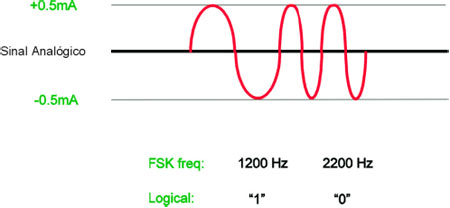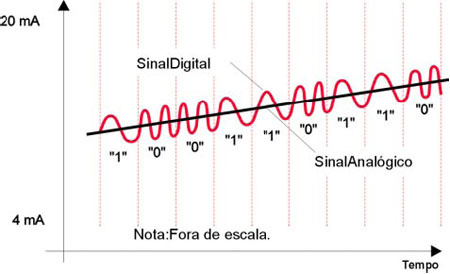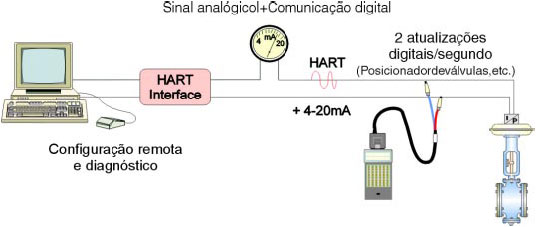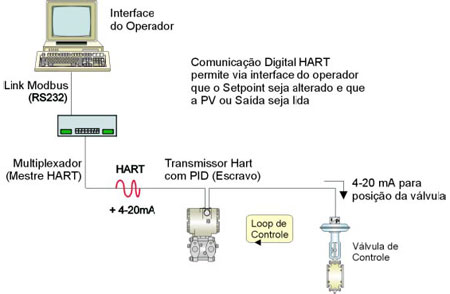
DeviceNet

The Benefits of the HART® Communication Protocol in Intelligent Instrumentation Systems
Digital Capacity
- Access to all instrument parameters and diagnostics
- Supports multivariable instruments
- Online instrument tracking
Analog Compatibility
- Simultaneous analog and digital communication
- Compatible with existing 4-20 mA wiring and equipment
interoperability
- Fully open de facto standard
- Universal commands and data structure
- Optimized by the Instrument Description Language
Availability
- Field-proven technology with over 1,400,000 installations
- Growing variety of products
- More used in field instruments than any other protocol in the industry
Introduction
The HART® communication protocol is globally recognized as an industry standard for 4-20mA, microprocessor intelligent field instrument communication. The use of this technology is growing rapidly and today virtually all of the world's largest instrumentation manufacturers offer products featuring HART® communication.
The HART® protocol allows for the overlapping of the digital communication signal to the analog 4-20mA signals, without interference, in the same wiring. HART® provides some of the benefits pointed out by the fieldbus, while still maintaining compatibility with analog instrumentation and taking advantage of the knowledge already mastered on existing 4-20mA systems.
This newsletter provides a brief overview of the HART® protocol and the benefits available through this important technology. Savings per instrument are US$300.00 to US$500.00 for initial installation and commissioning and US$100.00 to US$200.00 per year for maintenance and operation, as is commonly reported.
Analog + Digital Communication
For several years now, the standard field communication used by process control equipment has been the analog current signal, the milliampere (mA). In most applications, this current signal varies within the range of 4-20mA in proportion to the process variable represented. Virtually all plant process control systems use this international standard to convey process variable information.
Digital Communication + Simultaneous Analog Signal

Fig. 01 - HART uses FSK technology to encode digital information
communication over current signal 4 to 20 mA
The HART® field communication protocol extends the 4-20mA standard by also enabling process measurement more intelligently than analog control instrumentation, providing a leap forward in the evolution of process control. The HART® protocol promotes significant innovation in process instrumentation. The characteristics of the instruments can be seen via digital communication which are reflected in the name of the protocol, HART®, which stands for “Highway Addressable Remote Transducer”.
The HART® Protocol enables two-way digital communication in smart field instruments without interfering with the 4-20mA analog signal. Both the 4-20mA analog signal and the digital HART® communication signal can be transmitted simultaneously on the same wire. Primary variable and control signal information can be transmitted over the 4-20mA if desired, while additional measurements, process parameters, instrument setup, calibration and diagnostic information are available on the same wiring at the same time. . Unlike other “open” digital communication technologies for process instrumentation, HART® is compatible with existing systems.
The HART® Technology
The HART® Protocol uses the Bell 202 Frequency Shift Switching (FSK) standard to overlay digital communication signals over 4-20mA. As the FSK digital signal is symmetrical with respect to zero, there is no DC level associated with the signal and therefore it does not interfere with the 4-20mA signal. Logic “1” is represented by a frequency of 1200Hz and logic “0” is represented by a frequency of 2200Hz, as shown in figures 1 and 2. The HART® FSK signal enables two-way digital communication, which makes transmission and reception of additional information beyond the normal process variable in intelligent field instruments is possible. The HART® protocol propagates at a rate of 1200 bits per second, without interrupting the 4-20mA signal, and allows for a “master” application, enabling two or more updates per second from a single field instrument.

Fig. 02 - HART superimposes the digital communication signal on the
current 4 to 20 mA
Application Flexibility
HART® is a master/slave protocol, which means that a field instrument (slave) only “responds” when “asked” by a master. Two masters (primary and secondary) can communicate with a slave instrument on a HART® network. Secondary masters, such as portable configuration terminals, can be connected normally anywhere on the network and communicate with field instruments without disturbing the communication with the primary master. The primary master is typically a DCS (Distributed Digital Control System), a PLC (Programmable Logic Controller), a computer-based central control or monitoring system. A typical installation with two masters is shown in Figure 3.

Fig. 03 - The HART Protocol allows two Master devices to access
information from the same field equipment (slave)
O Protocolo HART® pode ser usado de diversas maneiras para trocar informações de/para instrumentos de campo inteligentes à controles centrais ou equipamentos de monitoração. A comunicação mestre/escravo digital, simultânea com o sinal analógico de 4-20mA é a mais comum. Este modo, permite que a informação digital proveniente do instrumento escravo seja atualizada duas vezes por segundo no mestre. O sinal de 4-20mA é contínuo e carrega a variável primária para controle.
Exemplo de Aplicação Inovadora
A flexibilidade do Protocolo HART® é evidente no diagrama de controle da Figura 4. Essa aplicação inovadora usa a capacidade inerente ao Protocolo HART® de transmitir tanto sinais 4-20mA analógicos como sinais digitais de comunicação simultaneamente pela mesma fiação. Nessa aplicação, o transmissor HART® tem um algorítimo interno de controle PID. O instrumento é configurado de modo que o loop de corrente 4-20mA seja proporcional à saída de controle PID, executado no instrumento (e não à variável medida, como por exemplo, a pressão, como na maioria das aplicações de instrumentos de campo). Uma vez que o loop de corrente é controlado pela saída de controle do PID, este é utilizado para alimentar diretamente o posicionador da válvula de controle.
A malha de controle é executada inteiramente no campo, entre o transmissor (com PID) e a válvula. A ação de controle é contínua como no sistema tradicional; o sinal analógico de 4-20mA comanda a válvula. Através da comunicação digital HART o operador pode mudar o set-point da malha de controle e ler a variável primária ou a saída para o posicionador da válvula. Uma economia substancial pode ser obtida através dessa inovadora arquitetura de controle.

Fig. 4 - Some HART devices include a PID controller in their
algorithms, implementing a cost-effective control solution
Best solution
The HART® Protocol allows its users the best migration path to enjoy the benefits of digital communication for intelligent instrumentation. No other communication technology can match the support structure or the wide variety of instruments available with HART® technology today. The technology allows for easy use of HART® compliant products that are commercially available from most instrumentation vendors and that meet virtually all process measurement or control applications.
The emergence of the fieldbus will not reduce HART® in new or existing applications. HART® provides its users with many of the same benefits, while maintaining compatibility and familiarity with existing 4-20 mA systems. HART® enables the economic benefits of remote communication, the flexibility and accuracy of digital data communication, field instrument diagnostics and the use of powerful instruments with multiple variables, without having to change entire systems.
Connection to current and future plant networks is ensured by digital communication capabilities and large installed base (over 5,000,000 installations and growing rapidly). Support provided by the HART Communication Foundation ensures that the technology will continue to serve instrumentation needs
For more information, visit the HART website at:
https://www.fieldcommgroup.org/g







